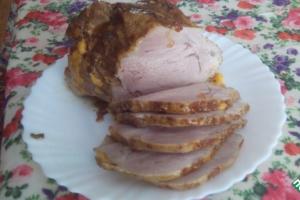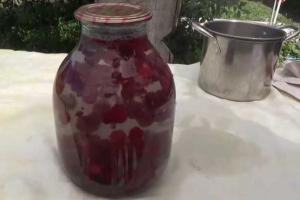Fonts made of natural and stained larch from the famous manufacturer Maestro Woods, made in traditional Russian style, fully ensure health treatments and at the same time give a pleasant feeling of revived antiquity.
Previously, large barrels with cold water stood in almost every Russian bathhouse. They were used to make contrasting water procedures when, after a hot bathhouse with a strong birch broom, a person suddenly plunged into a barrel of cold water, and where it was impossible to install a font, he simply dived into the ice hole. In general, in the old days, fonts were often used as a bath. The traditions are ancient, but, I must say, practically nothing has changed today: still the same barrel, still the same charge of vivacity and feeling of youth in the body. Only the font itself has become more aesthetically pleasing, acquiring interesting shapes, high-quality finishes and additional accessories that improve comfort during procedures. All these qualities are demonstrated by the hot tubs of Maestro Woods, a manufacturer with many years of experience, proven technologies and excellent reputation.
To produce hot tubs, the company uses selected blanks from Siberian larch, which does not lose its properties in conditions of high humidity and large temperature changes, which ultimately makes the products beautiful, reliable and durable. The biostability indicator of Siberian larch is greater than that of oak and even more so of pine, so this material breaks all records for durability in extreme conditions.
The hot tubs are coated with waterproof varnish, which prevents contact of water with wood, which significantly increases their service life and allows them to be used in any interior. Maestro Woods bathtubs look equally good in both the traditional interior of a Russian bathhouse and various interiors, performed in modern styles, for example, in Scandinavian, Oriental or even Japanese. Given the presence of a high-strength coating, the hot tub can be installed outdoors, but avoid contact with sun rays. For convenience, each hot tub comes with a ladder, a seat, a drain and an overflow.
The Maestro Woods range of larch hot tubs is presented in three options.
Round. A traditional form that looks beautiful and with its style hints at the opportunity to use a unique “antique” attraction. It is convenient to sit in a font of this shape with a group. It is great for spacious rooms. At the same time, the sizes of the produced models allow you to choose a round font for a bath of almost any size.
Oval. A popular shape resembling a bathtub. This type of bath allows you to lie down, relax and enjoy.
Corner. The shape of the font, which significantly saves space. Installed in the corner of the room, it will free up more free space and will look impressive.
The size range of produced models is quite wide, which makes the choice effective. Maestro Woods larch baths have been tested by many years of practice and are an excellent choice for those who want to get real pleasure from the bath.
The rarest wood in the world, which is a kind of precious material, is bog oak. Cubic meter This wood costs an average of $2,000. The bog oak has two lives, one of which it lives on land, and the second under water.
This second life began many centuries ago, when, subject to intergalactic laws, rivers changed their course. Time eroded the shores, and trees from coastal oak forests ended up under water, where they remained until an inquisitive person discovered them.

Only in the post-Soviet space are such huge reserves of bog oak preserved. For example, in European countries for 100 years the discovery of a single specimen of bog oak has been an event. And such finds are reported in the media.

For 100 years, many enterprising people in all corners of Russia have been harvesting bog oak. Bog oak, as part of other firewood, was mainly used as fuel.

One day, having pulled the trunk to the surface and tried to process it, he was amazed at the beauty and strength of the resulting wood. While admiring, the man asked himself the question: what unknown force turned the familiar oak into a mysterious one, covered on the surface with torn pieces of coal, and inside hiding a strong, smoky, living, unique texture of the material? And he began to look for answers to his questions, working with bog oak and giving it a third life...

In Rus', furniture sets and souvenirs, which now occupy pride of place in fine arts museums and antique salons around the world.

Not a single foreign furniture company can offer for public viewing products adequately made from natural bog oak. This is the prerogative of only Russian masters. Since from the beginning of the millennium to the present day, relict oak forests throughout the world have been completely destroyed, reserves of bog oak remain only in Russia.

In the late 70s of the last century, the story of builder George Goodwin from Florida spread across the pages of American publications. His life was radically changed by an accident: Goodwin, while building a house for himself, wanted to build “something like that” in it, and one day his fisherman friend, instead of fish, as a gift, brought him a pine log that had lain in the water for several decades. Goodwin was struck by the high quality of the wood, and he also realized that there would be other connoisseurs of this material.
George invested $100 thousand in the purchase of a plot of land along the river bank and began “catching” logs, cleaning them, drying them and selling them. His business is still thriving today, bringing in $3 million a year. Now his company produces products from stained pine (parquet, furniture) that decorate hotels, galleries, universities in America, as well as homes and offices famous people, including musician Paul McCartney and designer Ralph Lauren.
According to rough estimates by Russian scientists (no one will give the exact figure, since large-scale exploration work in this direction has not been carried out - it is too expensive), more than 38.6 million m 3 of sunken and submerged wood rests at the bottom of Russian reservoirs. However, so far no Russian has become as famous as Goodwin, and the companies that are professionally and consistently engaged in the extraction and processing of driftwood (as a rule, this is wood that sank during moth rafting) can be counted on the fingers of one hand. Why is the extraction of bog wood not developed in Russia? And whether this business is beneficial in the conditions of our country, we looked into it together with leading specialists and scientists working on this problem.
Figures and facts about stained wood
According to the Central Research Institute of Lesoslava, during transportation of harvested raw materials by water, up to 1% of the rafted volume sinks. For example, in the Volga basin, according to scientists, about 9 million m 3 of wood was flooded, in the Yenisei River - 7 million m 3, in the Ob and Irtysh basin - 6.5 million m 3. According to preliminary estimates, from 30 to 50% of sunken wood is commercial (and over 25% is coniferous species, and about 5% is oak, the most valuable material). However, according to experts, wood of all species that has not turned into dust has value. Wood that has been kept in water for decades is a unique raw material for the production of decorative, building materials, technological chips, high-quality charcoal (one cubic meter of fuelwood produces 200-300 kg of coal). Mineralization of wood occurs in water, it becomes stronger, and when correct processing gains the strength of stone. It doesn’t rot, bugs don’t get in it, and products made from this material are eternal.
But there is another side to the coin. Russian environmentalists are sounding the alarm: the driftwood resting at the bottom has a detrimental effect on the condition of the reservoir and its inhabitants. It releases phenol and mercaptans, displaces oxygen and thereby causes fish to die. On forums on the Internet, stories are told about how foreigners (in one case we were talking about the Japanese, in another about the Finns, in the third about the Chinese) wanted to take on the task of clearing Russian rivers of driftwood and were ready to do it for free, however, on the condition that They take the entire “catch” for themselves, but local authorities did not give the go-ahead for such work. In fairness it must be said that in Lately The state begins to take measures to clear the rivers of driftwood. Not long ago, on the Baikal Info portal, with reference to the Minister of Natural Resources and Ecology of the region, Oleg Kravchuk, a message appeared that they were planning to build a fuelwood processing plant on the site of the Baikal Pulp and Paper Mill. Since 2010, the transport company RusHydro has been working to clean the reservoir of the Sayano-Shushenskaya hydroelectric power station from driftwood, and its volumes in the water area have decreased by almost two-thirds - from 730 to 281 thousand m 3 . Due to the low quality of the wood, it is immediately disposed of, and very in an original way: cover with a layer of earth and gravel, and then sow with grass. However, this is only a drop in the ocean on the scale of our country. Scientists and enthusiasts have been thinking for several years now about how to make the extraction of driftwood attractive for business and thereby clean water bodies of industrial waste (this is precisely the official status of driftwood).
Slough is a delicate matter
Alexander Dupanov, director of the Trans-Center (Gomel, Belarus), which has been extracting and processing natural bog oak on an industrial scale since 1998, witnessed a real boom in the extraction of bog wood. According to him, in the 90s of the twentieth century, many entrepreneurs tried to organize a business in this area, but they wanted to do it quickly, without significant investments, without attracting highly professional specialists. As a result, thousands of cubic meters of valuable material were ineptly destroyed.
On the Internet you can still find many offers for the sale of bog wood, but, according to Alexander Alexandrovich, the vast majority of these are one-time offers and, as a rule, entrepreneurs do not guarantee the shipment of material in the declared volume, much less the declared quality.
“In the post-Soviet space there are only a few enterprises capable of providing the entire cycle - from the extraction of fuelwood and its processing to the output of the finished product. quality material. A number of companies simply do not have proven technologies, says Mr. Dupanov. - In addition, when organizing production, they do not take into account that the funds received from the sale of dry bog wood do not cover the long-term costs of producing high-quality material. For example, to obtain 100 m 3 of high-quality dry bog oak, it is necessary to find, extract and process at least 1000 m 3 of driftwood.
Extraction and processing of bog wood is a complex and lengthy process. First, you need to conduct reconnaissance and draw up maps of the location of the flooded wood. To do this, specialists have to explore 300-400 km of the river, then scuba divers get down to business - they descend to a depth of 30 m to discover the exact location of the flooded forest. Sunken trunks need to be lifted ashore (and in such a way as not to damage them), carefully transported, sorted and processed. Experts say that stained wood is a very capricious material; it can lose its properties after lying in the open air for several hours.
According to Vladimir Pushkarev, head of the Samrat company, which is engaged in the extraction and processing of drift wood, in order to engage in bog wood at an industrial level, you need to invest several million dollars in the business. “The extraction of marine raw materials is fraught with risk. It is necessary to create a team of like-minded people. And those who hope to get rich quickly in this business will be disappointed, he says. -Our company is engaged in the extraction of driftwood not for the sake of making huge profits and enrichment, but because we like this business. You have to be a fan to do this.”
Good log - for the price of a car
In the late 1980s, Arkady Arakelyan worked as the manager of a large construction trust, which carried out its own logging operations and included timber processing enterprises. When about 10 million m3 of melted wood was discovered in the area of the Ob Bay (some sank during rafting, some during ice drift), then, according to Arkady Arakelyan, there were several attempts to extract this wood from the bottom of the bay, but nothing one was not successful: the costs were incommensurate with the results obtained.
“The best quality logs are usually found at the very bottom of the wood, and in order to get them, you first need to remove all upper layer. Mostly it is rotten, but you also need to manage to get the lower logs without damaging them. And getting it out is still half the battle; the hardest thing is to transport the extracted wood to the processing site,” the specialist shares his experience. - In the water column it did not come into contact with air, and after rising to the surface it begins to crack. When we first brought wood raised from the bottom for processing, we constantly moistened it with water, the second time - in a specially equipped aquarium. And still not everything was delivered. But it still needs to be sawn in its raw form, and then properly dried.”
Arkady Arakelyan confirms the words of Alexander Dupanov: the useful output was very small. Behind good log, according to Mr. Arakelyan, in Soviet times they gave several thousand rubles (at that time you could buy a car for that kind of money). But even such a high price for the resulting material did not cover the costs of its extraction and processing. The management of the construction trust in which Arkady Arakelyan worked considered the business unprofitable, and the work was stopped.
Today, the range of prices for stained wood is very wide. The cost of stained wood depends on many factors: the species, its condition and quality, shipping conditions... For example, 1 m 3 of stained birch is offered at a price of 2 to 15 thousand rubles, 1 m 3 of stained pine - 3-20 thousand. rub., 1 m 3 of larch - 4-15 thousand rubles, 1 m 3 of stained aspen - 1.5-15 thousand rubles. The widest range of prices for bog oak: 1 m 3 of oak board can cost $200 to $30,000, the cost of an untreated log can cost from $500 to $3000.
“It is expected that the average price of 1 m 3 of bog oak in solid trunks in 2014 will be 3,300 euros, and high-quality dry material - from 6 to 150 thousand euros,” Alexander Dupanov shares his forecasts. - But in order to sell a product at such a price, many conditions must be met: it must have excellent consumer qualities. The price below the market price should alert a potential buyer. This may mean that the seller is either engaged in illegal extraction of raw materials, or he accidentally got them. Moreover, in both the first and second cases, there is a high probability that the material long time came into contact with air (which is detrimental to it), and could also be repeatedly dried and re-immersed in water (it is difficult to obtain high-quality dry material from such raw materials).”
An effective way to extract driftwood for small rivers


A mechanical engineer from Barnaul, Vladimir Nevsky, devoted more than one year to searching for an economically viable method for extracting, transporting and transshipping sunken wood on small rivers (moth rafting was often carried out precisely on small, non-navigable rivers). And I found it! Vladimir Aleksandrovich developed the design of a small-sized floating crane - a mobile and compact unit that can go where other equipment cannot. Mr. Nevsky’s invention was repeatedly tested on small rivers Altai Territory.
“Both small and navigable rivers are clogged with fuel, where high-performance floating cranes can be used for extraction. However, the costs of searching for logs scattered throughout the underwater river expanses, their extraction, transportation and transshipment will be incommensurate with the final result. But on small rivers it’s easier. Floating logs lie in the reaches of the pits, near the rifts of narrow rivers, and it would not be easy for a professional riverman to a lot of work find them,” says Mr. Nevsky.
The idea of developing underwater deposits fascinated Vladimir Nevsky back in 1992. Then he managed to gather a group of enthusiasts who, armed with archival information about timber rafting, set off on a voyage along the rivers of the Altai Territory. They determined the volume of sunken wood, compiled pilot maps, and marked roads and settlements on diagrams and maps. But when they began to calculate how much money needed to be spent to raise the forest from the water, they realized that the attractive idea resulted in a difficult economic problem.
According to Vladimir Nevsky, such common methods of extracting sunken moth wood from small rivers, such as diving and trawling from the shore, are, firstly, ineffective, secondly, labor-intensive, thirdly, not always possible in inaccessible coastal areas and, fourthly, they are economically unjustified. And the use of high-performance floating cranes, according to the expert, on small rivers is impossible due to the lack of fairway dimensions that allow the use of such equipment.
“The domestic industry produces fuel lifting units LS 65 and LS 41. But the cost of these units exceeds several million rubles. In addition, due to their large dimensions, they cannot be used on small rivers. But the work of a floating crane with minimal dimensions is possible where a sparrow is knee-deep: on reservoirs with a fairway width of 4.5 m and a depth of 30 cm.”
According to Nevsky’s calculations, with the help of such a floating crane, 700-900 m 3 of driftwood can be extracted per month. The performance of a floating crane depends on the depth of the reservoir and the degree of siltation of the logs. Diesel fuel consumption for lifting fuel, transportation at a distance of up to 50 km and transshipment to vehicles is 1500 kg/month. The average cost of 1 m 3 of raw materials is 550-600 rubles. (including lifting, transportation, transshipment and loading onto a timber truck), and the average price of round timber today is about 3 thousand rubles. “So judge for yourself whether it is profitable to engage in this business or not,” says Vladimir Alexandrovich.
How it works?



According to experts, the volume of annually floating wood in the Boguchansky reservoir will be up to 1 million m 3 per year
According to Vladimir Nevsky, there are no wisdom or tricks in operating a floating crane. The unit is moved across the reservoir using deck winches, the cables of which are secured to shore supports (natural or artificial). The floating crane is attached to a so-called bottom trawl (similar to a heavy rake), which, when the crane moves, scoops up everything that is at the bottom of the reservoir. When the resistance to movement of the floating crane reaches its limit, it returns to the trawl and lifts everything collected onto its deck. The raised wood is formed into a bundle. After forming a bundle of 10-15 ridges, a pontoon is attached to it. The bundle with the attached pontoon is dumped into the water and towed by a boat to the transshipment area, where it is lifted by a log winch to the shore warehouse and dismantled.
Another big advantage of this technology is that the lifted log is not sent directly to the shore, but is in the water, tied over the side of the floating crane. Vladimir Aleksandrovich says that this helps to avoid the so-called decompression disease - cracking of logs.
“The log raised from the depths seems to be boiling, clicks are heard. Gases contained in wood lying at the depth of a reservoir, where the pressure is higher than atmospheric pressure, can rupture it with a rapid rise, says Mr. Nevsky. “In addition, the crane swings during operation, the logs attached to it are in motion and are thus washed away from silt and sand.”
The floating crane can be delivered to the work site by towing along the river or on a regular truck without any approval from the traffic police; it fits into the road dimensions. And it takes three to four hours to assemble with the help of three or four people. Vladimir Nevsky says that he had experience working together with both public organizations, so with scientific institutes, but neither the first nor the second wanted to develop his business.
“There were several meetings with potential investors, but they, as a rule, were interested in the final result, they demanded all the information up to the developed business plan, which took into account all tax deductions, accounting calculations, investment risks... This work requires different knowledge and approaches, rather than the work of a designer,” says Vladimir Aleksandrovich.
We determine the quality and quantity of driftwood blindly

The introduction of the inventions of Alexander Rozhentsov, candidate of technical sciences, associate professor of the Volga State Technological University (Republic of Mari El), could significantly facilitate and reduce the cost of searching for driftwood. Alexander Pavlovich developed and patented two devices in Rospatent. The first helps to detect sunken wood under water (in limited visibility and even in its complete absence) and accurately aim the load-handling mechanism at it. The second device is designed to determine the hardness of sunken wood by the density of the structure: rot - firewood, conditionally hard - business. That is, in order to determine the quality of driftwood, it is not necessary to raise it to the surface, and this is a serious saving of time and money.
“Both devices are quite simple, so their cost is low. Moreover, in order to use these devices, no additional equipment is needed, says the scientist. “The devices are installed directly on the jaws of the load-handling grab mechanism.”
At one time, Alexander Pavlovich defended his dissertation “Improving the processes of searching and assessing accumulations of sunken wood in timber-rafting water bodies.” The research results were used in production at forestry enterprises of the Republic of Mari El: OJSC Mari Pulp and Paper Mill, Zarya Timber Mill, State Enterprise Mari Timber Industrialist, OJSC Kozmodemyansk Rafting Office.
“With the help of invented devices, the driftwood was raised twice. True, no bog oak was found, but the main thing for me was to confirm the functionality of the devices, which was done,” says Alexander Rozhentsov. According to Alexander Pavlovich, the driftwood raised during the first tests was sold to the population for firewood, and the one that was raised during the second test was transferred to Mari PPM OJSC, where it was processed into corrugated cardboard and toilet paper. At that time, in the Republic of Mari El there was no suitable woodworking enterprise where the raised driftwood could be properly processed.
“In our republic, fuelwood production is essentially not carried out now. Previously, this was done by timber enterprises that were engaged in rafting, says Mr. Rozhentsov. - However, at present almost all large timber rafting enterprises have gone bankrupt. Small private entrepreneurs are trying to do something, but they lack experience and special tools.”
According to Alexander Pavlovich, raising driftwood is a relevant and profitable business. But in order to seriously engage in it and achieve success, you need to strictly follow the technology, without skipping a single stage: invest money not only in the extraction of raw materials, but also in conducting exploration work and high-quality processing of the material. According to the observations of Alexander Rozhentsov, most of those who extract flooded wood, trying to save money, do not follow the technological chain. The scientist says that he has been approached more than once by enterprising fellow citizens who want to buy maps of sunken wood in the Republic of Mari El, but no one has come with an offer to invest money in exploration work.
“From a business point of view, this business, of course, has prospects. After all, stained wood is ten times more expensive than freshly cut wood, and if you sell it not just in logs or boards, but make some products from it (furniture, home accessories, souvenirs), you can develop well, says Mr. Rozhentsov. - There are many rich people in Russia who are willing to pay for furniture made of stained wood, especially oak, and it would be much more profitable for these people to purchase it here than to transport it from overseas. And we must take into account that in Europe the reserves of bog wood have been exhausted.”
Marina SHEPOTILO

Geoffro Uitto
creates his sculptures from driftwood found on the ocean coast




James Doran-Webb
Originally from the UK, he has been living in the Philippines for the last 20 years. From branches thrown up by the sea, he creates graceful creatures

Stained wood of any species is formed during a long period of time in water. If it has not turned into dust over the years, then each such raw material, regardless of the species, already has a high value for the manufacture of building materials, decorative items and much more. Stained pine or driftwood that has lain for decades in water acquires best characteristics than any commercial tree, cut down during its growth period and even processed using modern technologies.
Stained pine - main properties and features
Water changes the very structure of wood. Mineralization occurs in it, which is the main reason for the change in the properties and quality characteristics of the feedstock. The main differences that characterize stained pine are:
- high degree of strength. With proper processing it can be increased to the strength of stone;
- absolutely not susceptible to rotting;
- complete neutrality to significant temperature changes and the destructive effects of moisture;
- complete absence favorable conditions for the development of harmful insects;
- the actual eternity of products made from such material.
This material is widely in demand in many areas. But it is distinguished by its high price. This is due not only to the unique characteristics that stained pine has, but also to the complexity and duration of the process of its extraction and processing, and strict adherence to the rules and conditions of its drying.
One of the main “suppliers” of bog material is driftwood - a tree that has fallen into the water for natural reasons or as a result of the process of rafting chopped wood. by water. Moreover, the quality characteristics of such a material directly depend on the properties of the water in which it has been located for many years. Pine, which was extracted from salt water, has special properties.
Areas of use
 Material such as stained pine is in very high demand in a wide variety of areas. It finds its application:
Material such as stained pine is in very high demand in a wide variety of areas. It finds its application:
- in the production of external decorative elements and in the manufacture of luxury decorative products;
- in furniture and parquet production;
- as the best raw material for the formation of technological chips;
- in the process of producing high-quality charcoal;
- in the manufacture of the widest range of building materials;
- in the environmentally friendly construction of extra-strong wooden residential buildings.
For low-rise construction, stained pine is an ideal material that does not require additional protective treatment. It is not afraid of destructive climatic influences and does not shrink, which makes it possible to use housing built from such material immediately after its completion.
All photos from the article
Many people know about this type of material as bog oak, but besides it there are other species, their main feature is that they have properties that are radically different from the usual options. The price of such materials is very high, and they are used for the production of luxury furniture and finishing materials.
In this review we will tell you what this option is.

Advantages of stained wood
Now let’s see why this group of materials is so highly valued; there are several reasons for this popularity:
| Unusual structure | The color of the wood differs from traditional options, and this effect is difficult to achieve by artificial means, of course, no species darken as much as oak, but pine and birch also acquire a unique look that can decorate any interior; it’s not for nothing that these options are used in luxury buildings |
| Strength | The hardness of the material is many times greater than conventional analogues, so you can find various products stained wood, which were made many years ago, but look as if they were made quite recently. There are no exact characteristics and indicators, since they depend on many factors, but the fact that they are significantly higher is beyond doubt |
| Resistance to adverse influences | According to experts, the resistance of such wood to moisture is very high, so use it to make garden furniture and various sculptures - they will last for decades, or even centuries. Also a big plus is that the material is not attacked by pests, this also has a positive effect on the durability of the elements |
| Uniqueness | The color of each log directly depends on the conditions in which it was located, the ratio of minerals in the soil, water temperature and much more. That is, each extracted element is unique, and it is impossible to find exactly the same one; each product made from such raw materials is unique and almost immediately after production it can be classified as an antique |
Important! Among other things, it should be noted that stained wood rises in price every year, so purchasing products made from it is an excellent investment, because they do not deteriorate over time and preserve good characteristics for a long time.

What you need to know about this type of wood
To begin with, we will talk about all the features of extraction and processing of the material, and then consider the purposes for which it is used. Let us immediately note that all of the above advantages are inherent only if the material was extracted and processed in accordance with technology.
How the material is extracted
First, you need to understand how the material acquires all its properties; this can happen in two ways: either trees growing along the banks of rivers and swamps fall, or individual elements fall to the bottom when rafting logs along rivers.
They usually remain there for several tens to several hundred years, and some harvested oak logs are generally more than a thousand years old. Everything is clear here - why older material, the more unique the properties and the higher its price.

As for the extraction of this valuable raw material, it is unlikely that you will be able to do it yourself; the reason for this is a rather complex technology:
- It is worth noting that Russia has the largest deposits of such wood in the world, but industrial production has not yet been established and only a few enterprises are engaged in such work. This is due to the labor-intensive and costly process; to extract one hundred cubic meters of high-quality material, you need to lift it from the bottom and;
- The production process from the moment of extraction to the sale of ready-to-use material takes at least several years, which requires a significant investment at first, and the costs will begin to pay off in three years at best. Therefore, even large companies cannot afford to master this type of work;
- First of all, bottom exploration is carried out in order to determine the location of wood at the bottom.. Using modern means With echolocation, this process has been significantly simplified, but it still takes time, since 300-400 kilometers of the riverbed are usually examined;
- Next, divers begin their work, exploring the bottom of the reservoir and determining the exact location and number of logs, this allows them to draw up an approximate plan for extraction;

- Then it is necessary to organize the lifting of wood from the bottom, this requires very productive equipment, since sometimes you come across elements of simply enormous size, in the photo below a clear example is to lift such a trunk with a simple tap unrealistic, and given that the density of the material is high and amounts to 1500 kg per cubic meter, one can imagine its actual mass. Naturally, equipment is selected in accordance with intelligence data;








